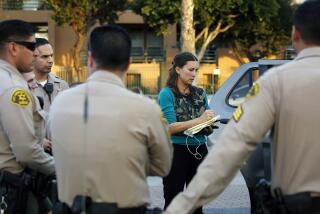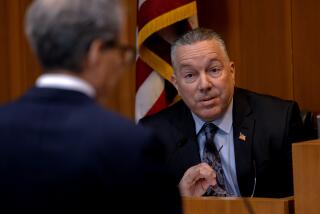FBI’s Rodney King-LAPD file revealed; it’s mostly news clippings
The FBI has released the file from its early 1990s investigation into LAPD conduct during Rodney King’s beating and arrest.
The file consists almost entirely of press clippings from newspapers such as The Times, the Los Angeles Daily News and the Pasadena Star-News. Memos in the file also indicate that FBI agents used a third-party monitoring service that archived and sold clips of major television and radio shows for research purposes.
The FBI recently posted the files in part as a response to a Freedom of Information Act request by MuckRock, a nonprofit group that helps the public submit public records requests. The agency periodically releases files for major investigations, and an online archive also has documents from the agency’s investigations of Penn State football coach Joe Paterno and Libyan dictator Moammar Kadafi.
DOCUMENT: Rodney King’s FBI file
The 725-page Rodney King file offers few insights into the direction of the FBI investigation, including a few terse memos and practically no annotations. But the headlines paint a rapidly evolving picture of the events leading to the spring 1992 riots and the eventual conviction of Stacy Koon and Lawrence Powell, two of the Los Angeles police officers involved in King’s beating.
It begins in March 1991 with a flood of news reports about the beatings, sparked by the grainy two-minute home video that looped on television news channels worldwide. A wave of editorials calling for LAPD Police Chief Daryl Gates’ resignation follows, including one written by then-mayor Tom Bradley for The Times.
In opinion pages, columns and editorials, the debate initially sparked by the beatings dealt with how police officers should be using force and whether the public outrage the LAPD faced was deserved. But after the officers were acquitted by a Simi Valley jury and riots rocked the city, condemnations of the LAPD came from far and wide.
A year after the beatings, there are stories about King’s troubles after the verdict -- health problems, a drunk driving arrest in a restaurant parking lot in Orange, and other brushes with police. Several newspaper and magazine articles chronicled the veritable industry that had grown around the idea of selling King as a victim, in film, on television, and on T-shirts and mugs.
Headlines also chronicle the publicity campaigns launched by some of the officers ahead of the 1993 federal civil rights trial.
ALSO:
Coroner identifies man fatally shot outside his Arleta store
State Capitol flags at half-staff to honor Hawthorne officer
Victory for veterans -- WWII barracks at O.C. Fairgrounds to be saved
More to Read
Sign up for Essential California
The most important California stories and recommendations in your inbox every morning.
You may occasionally receive promotional content from the Los Angeles Times.










